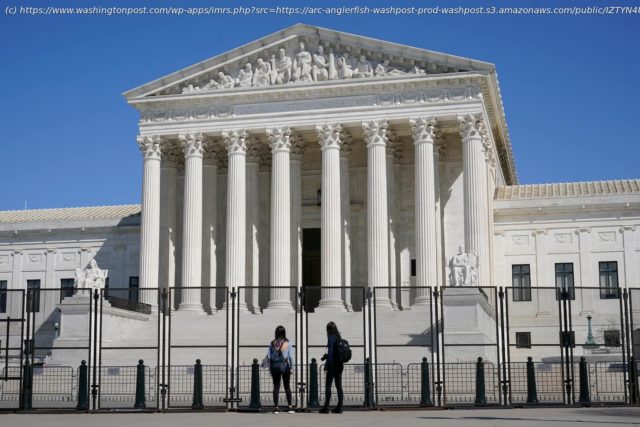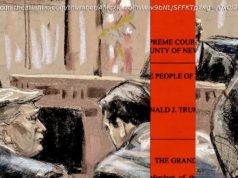A majority opinion by Chief Justice John Roberts says an unconstitutional “seizure” can take place even if the person is able to evade arrest.
The Supreme Court on Thursday expanded protection for those who sue after being injured by police, saying that an unconstitutional “seizure” can take place even if the person is able to avoid being detained or arrested. The court on a 5-to-3 vote approved a lawsuit from a woman shot by police when they had come to arrest someone else, even though she was able to drive away and thus was not held by physical force. “The question in this case is whether a seizure occurs when an officer shoots someone who temporarily eludes capture after the shooting,” wrote Chief Justice John G. Roberts Jr. “The answer is yes: The application of physical force to the body of a person with intent to restrain is a seizure, even if the force does not succeed in subduing the person.” Roberts was joined by fellow conservative Justice Brett M. Kavanaugh and liberal Justices Stephen G. Breyer, Sonia Sotomayor and Elena Kagan. Supreme Court struggles with when police may enter home for safety checks or suicide threats Conservative Justices Clarence Thomas and Samuel A. Alito Jr. joined an occasionally sarcastic dissent by Justice Neil M. Gorsuch, which implied that the majority was looking for a way to rule for the woman because of recent concern over police shootings. “The majority holds that a criminal suspect can be simultaneously seized and roaming at large,” Gorsuch wrote, adding, “It’s a seizure even if the suspect refuses to stop, evades capture, and rides off into the sunset never to be seen again. That view is as mistaken as it is novel.” The case was argued before Justice Amy Coney Barrett joined the court, and she did not participate in the ruling. The chief justice applied the Constitution’s prohibition of unreasonable searches and seizures and Supreme Court precedent to facts that seemed inspired by the methamphetamine-fueled television drama “Breaking Bad.” It started when New Mexico State Police arrived at an Albuquerque apartment complex in July 2014 to serve an arrest warrant. Roxanne Torres was not the person on the warrant, but Officers Janice Madrid and Richard Williamson thought she might be. Roberts said the facts are “hotly contested.” But in Torres’s version, she was coming down from a meth high and noticed only that people with guns were approaching.
Домой
United States
USA — Criminal Supreme Court divides on when a shooting by police can be considered...






